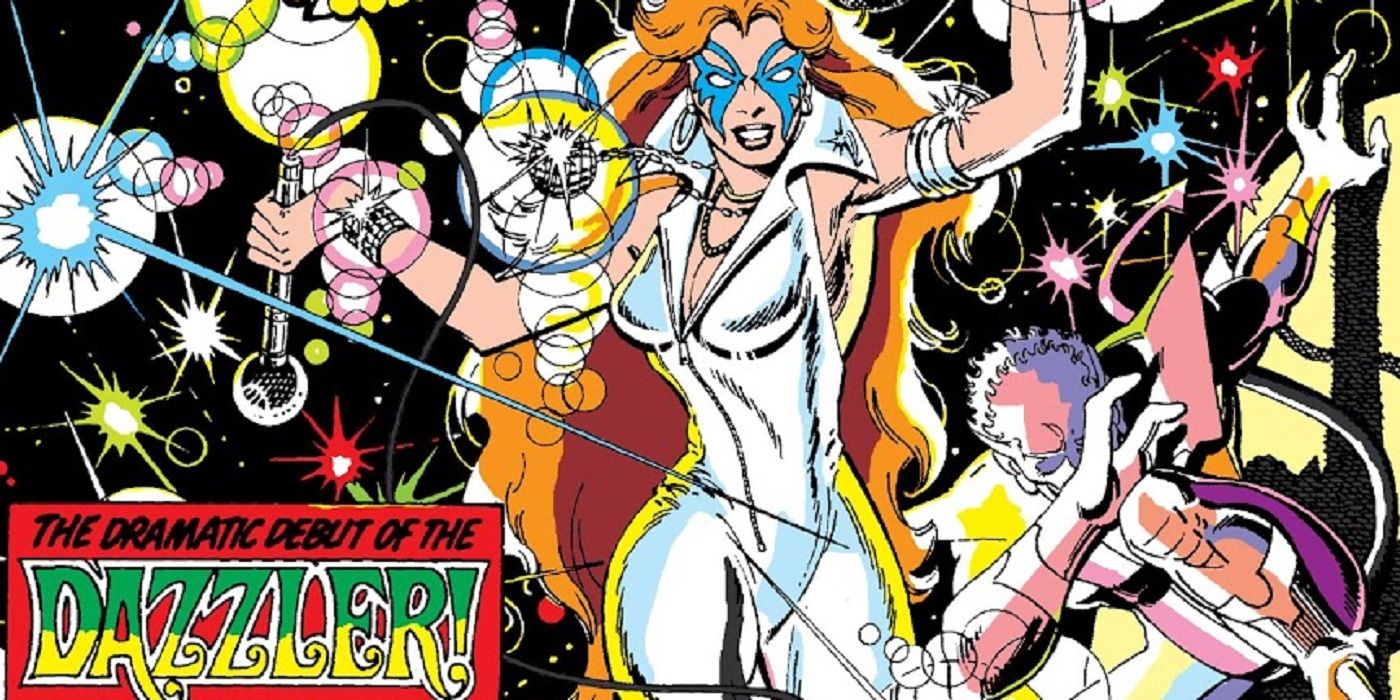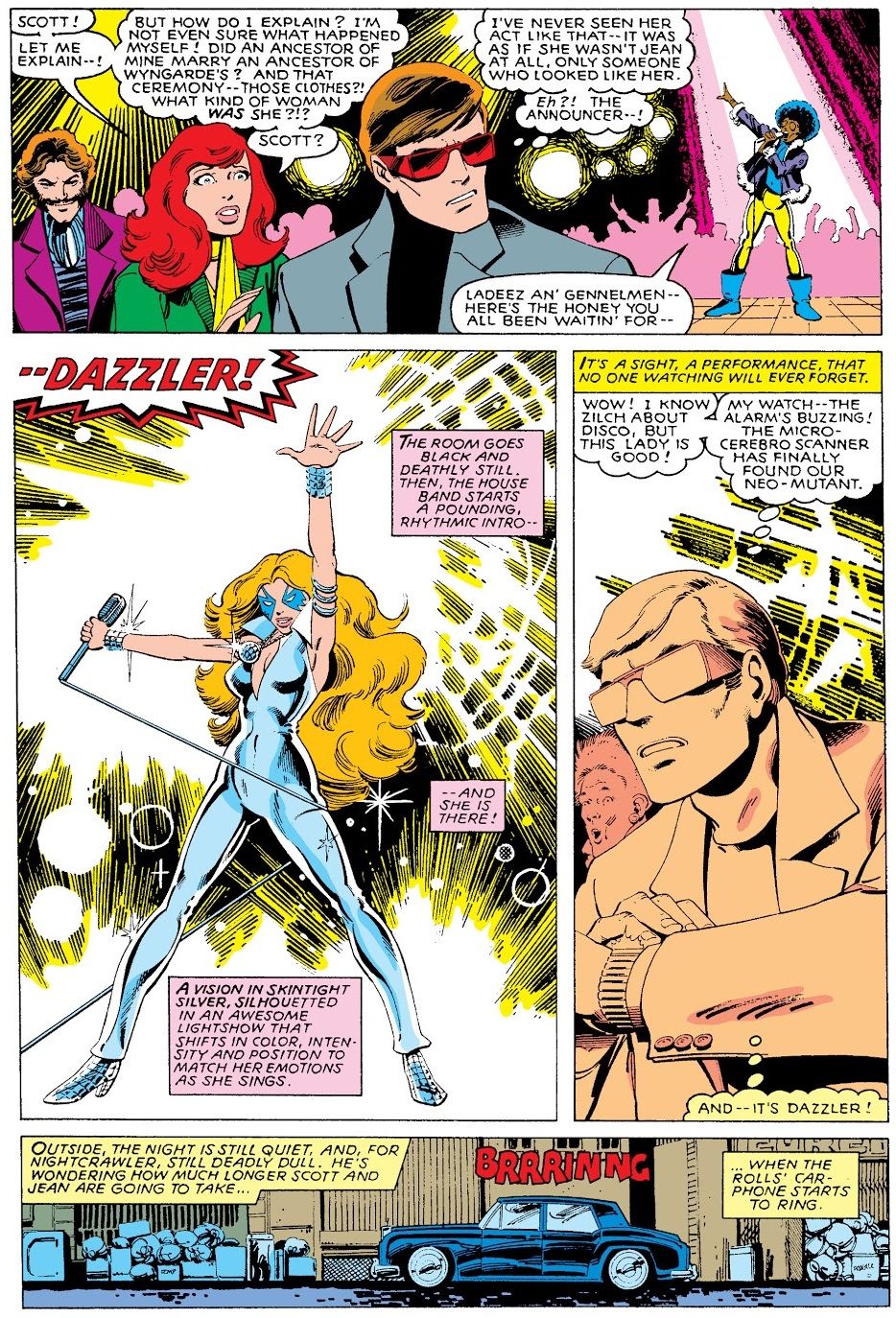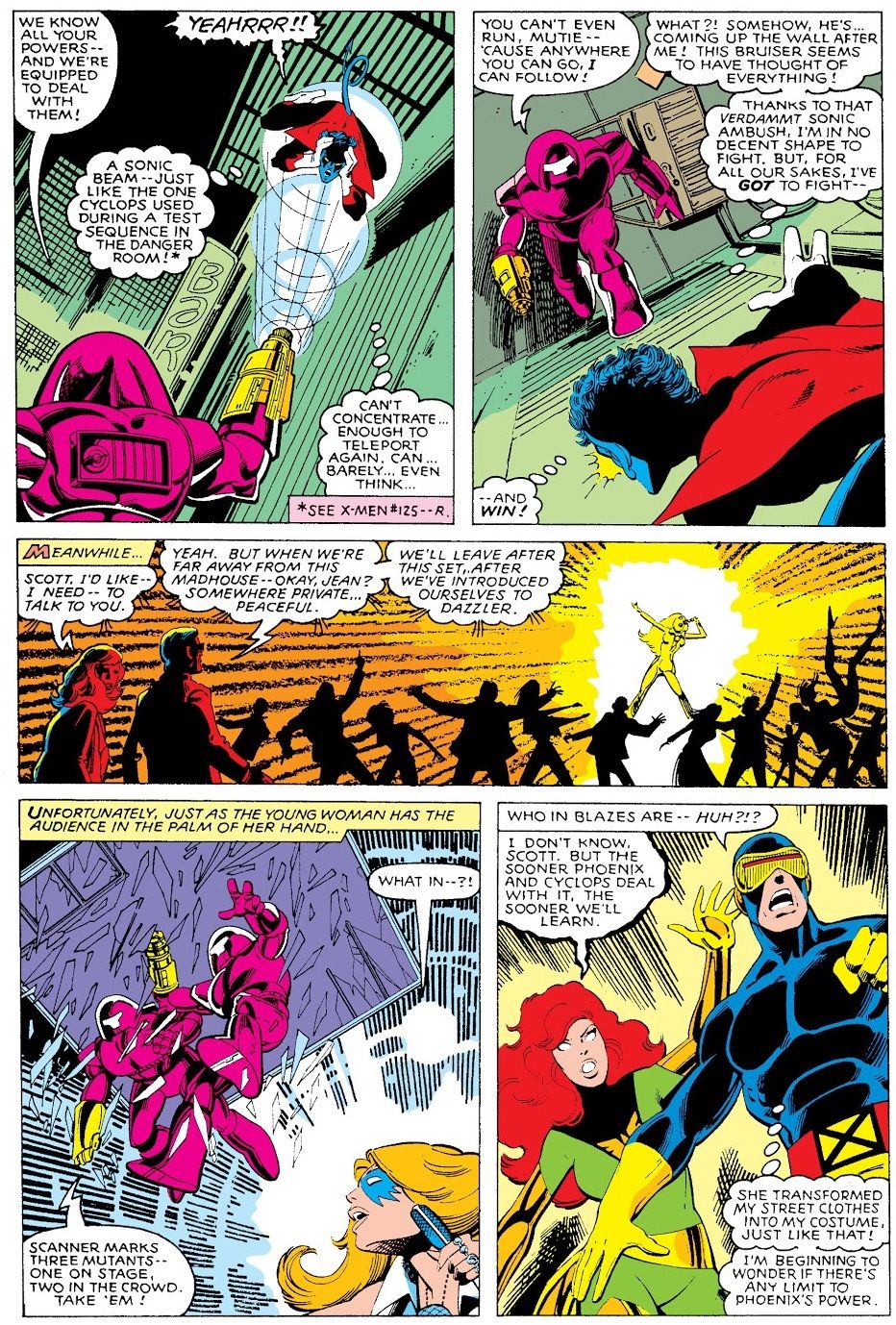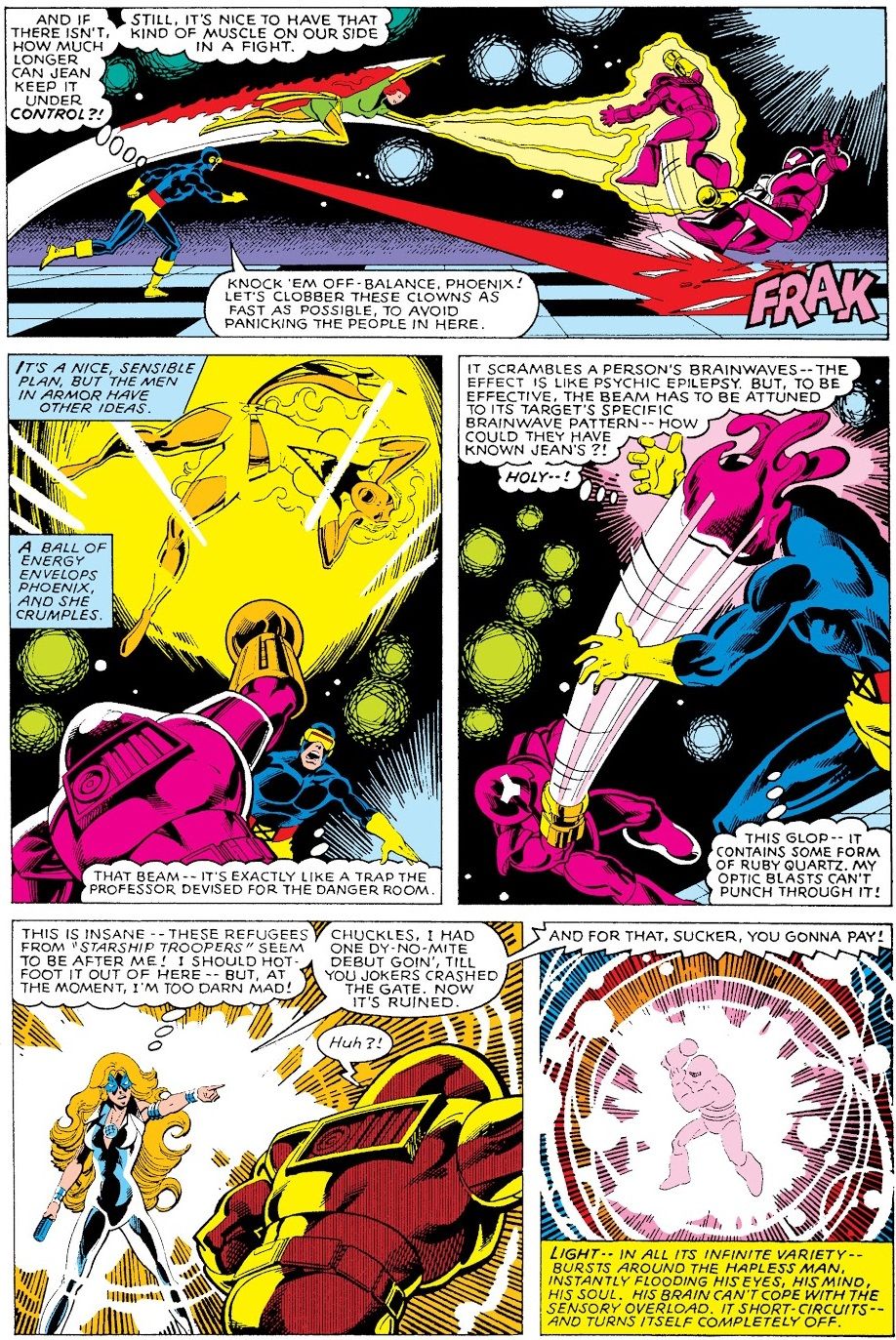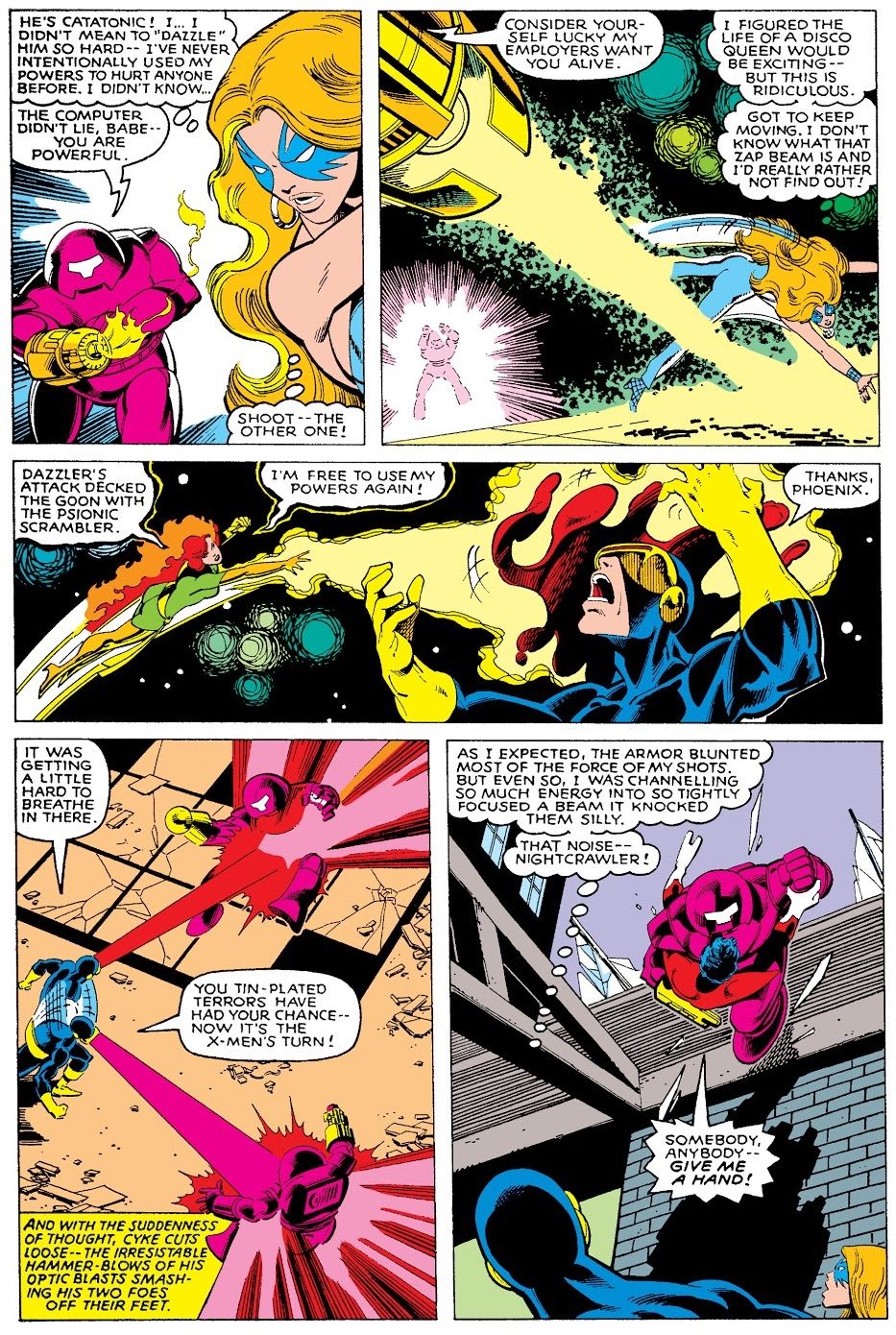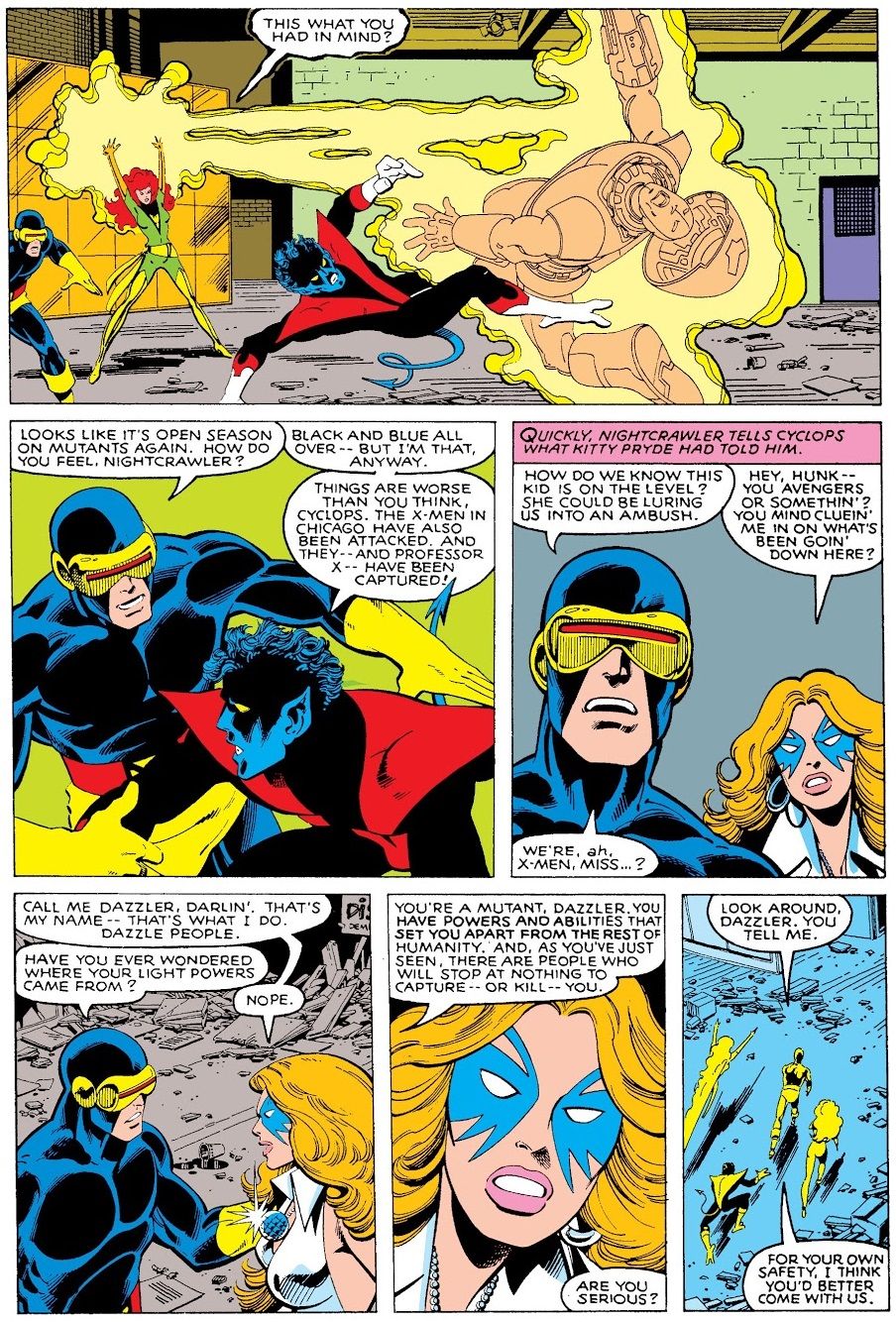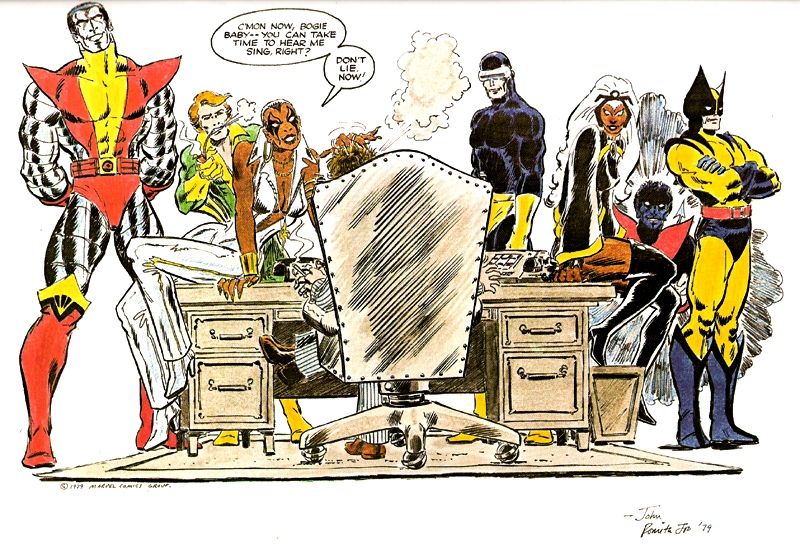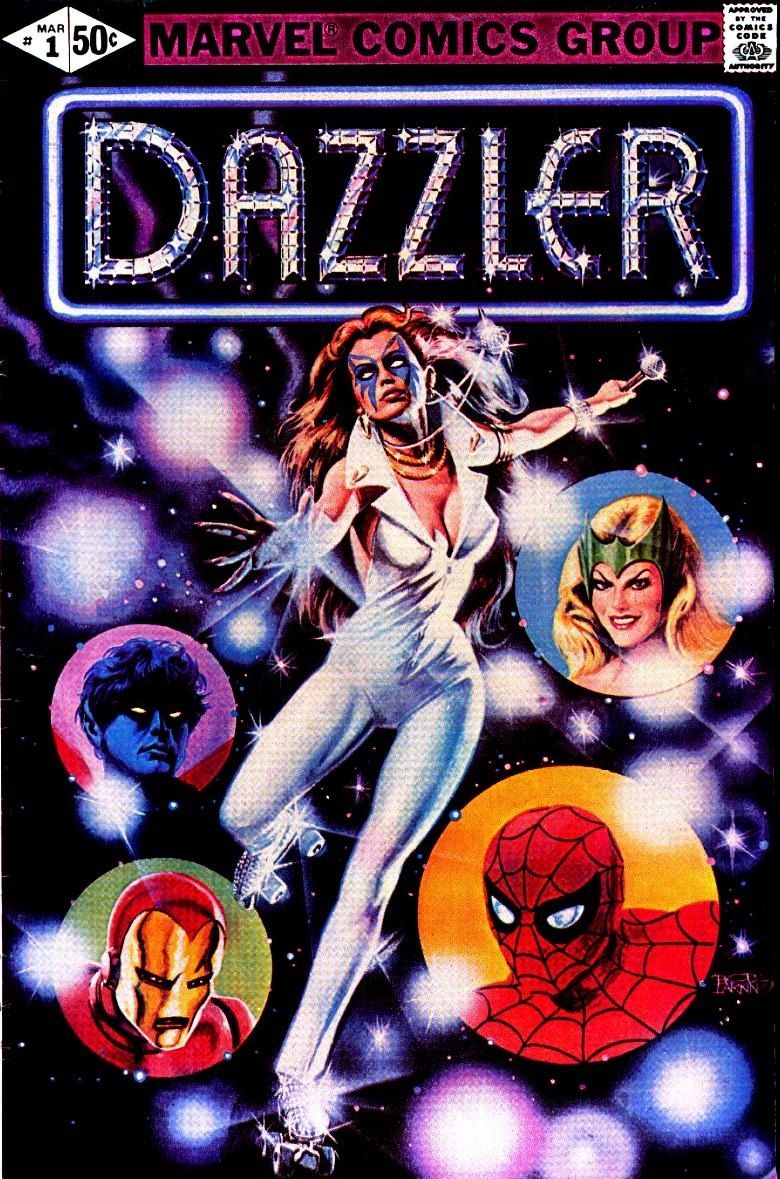This is "Look Back," a feature that I plan to do for at least all of 2019 and possibly beyond that (and possibly forget about in a week, who knows?). The concept is that every week (I'll probably be skipping the four fifth weeks in the year, but maybe not) of a month, I will spotlight a single issue of a comic book that came out in the past and talk about that issue (often in terms of a larger scale, like the series overall, etc.). Each week will be a look at a comic book from a different year that came out the same month X amount of years ago. The first week of the month looks at a book that came out this month ten years ago. The second week looks at a book that came out this month 25 years ago. The third week looks at a book that came out this month 50 years ago. The fourth week looks at a book that came out this month 75 years ago.
I was a bit delayed catching up in all of my Reasons to Get Excited at the end of November, so I missed a few Look Backs, so I'll catch up with the last few ones for November before moving on to December.
Since there was a fifth weekend in November, I'll do a bonus November piece. The bonuses go back one of the years I don't normally do (so 20/30/40/60/70/80 years back). In this instance, we'll look at November 1979's debut of the Dazzler in X-Men #130 by John Byrne, Chris Claremont and Terry Austin.
The comic book is normal enough, as the X-Men's search for new mutants (which, just last issue led them to Kitty Pryde in HER first appearance) has now taken them to a pop concert, where they discover that the mutant that they're looking for is the singer at the concert!
The same Hellfire Club bad guys who attacked the X-Men who went to find Kitty attack this group of X-Men and hijinx ensue...
The whole thing seems kind of straightforward, right? The plot of the X-Men at the time (which would later be known as the early stages of the Dark Phoenix Saga, as the Hellfire Club end up messing with Phoenix's head so much to manipulate her into becoming their Black Queen that she instead snaps and becomes the Dark Phoenix) involved them looking for new mutants and voila, here is a new mutant. Just like how Byrne and Claremont invented Kitty Pryde the previous issue, so, too, did they now invent Dazzler.
But, of course, things are never quite that easy!
I discussed this in a Comic Book Legends Revealed almost 14 years ago.
In Comic Feature #7 from November 1980, Richard Howell and Carol Kalish interviewed Roger Stern, Tom DeFalco and Louise Jones about the debut of Dazzler, and how the character came about. According to the article:
The collaboration with Casablanca caused many development difficulties in the Dazzler concept, leading Marvel to cancel the book "five or six times" previous to the publication of its first issue (a possible record). Although over the past year, Marvel had begun to guest-star The Dazzler in various targeted-circulation titles in their own comics line, the corporate vacillation of Casablanca over the character's future caused several significant variations of powers and personality between her various depictions. At the time, The Dazzler was guest-starring in SPIDER-MAN, for example (#203), Spidey's then-scripter Marv Wolfman called DAZZLER-writer Tom DeFalco to ascertain the nature of The Dazzler's powers. "At that time," says DeFalco, "I had gotten three different power suggestions from Casablanca. I had to tell Marv, 'Marv, I can't tell you! I told him what the three powers were...'"
Later on, when discussing how Dazzler developed from an initial concept called "The Disco Queen," the interview proceeds...
Comic Feature: Did Casablanca's interest precede DISCO QUEEN or was it the spark for THE DAZZLER?
Tom DeFalco: Casablanca's interest was before DISCO QUEEN.
Louise Jones: Casablanca just came to Marvel and said, "Hey, you make a singer and we'll create someone to take on the persona." It was a wonderful tie-in. And then Casablanca... (Jones puts thumbs down)
DeFalco: So anyway, we worked out a plot, Jim Shooter and I. Jim was editor-in-chief so it was accepted by Marvel. The plot went over to Casablanca. Casablanca said, "No, this is nothing like what we want." So they bounced it back.
Comic Feature: Did they say what they did want?
DeFalco: They had about ten or twelve different things that they wanted. I'm a professional commercial writer and I can put in anything that a customer wants. Especially if they were willing to pay for it over and over again. So we went and did everything that they wanted. Sometimes it was pretty silly, but we did it just the way they wanted.
Comic Feature: Anything in particular?
DeFalco: At this point I can't remember the silly things but it didn't really matter because the second time they saw it they decided again that it wasn't what they really wanted. So I think around the third or the fourth time we finally got what they wanted, more or less, and we had essentially the story that will appear in Dazzler #1 and #2. They wanted some strange things done with the artwork. Take the X-MEN pages which basically come across like bubblegum cards. They said the story was fine and basically everything was fine - they wanted the F.F., THE NEW X-MEN, SPIDER-MAN, THE HULK, and a bunch of other characters thrown in.
Comic Feature: All in one issue?
DeFalco: Yes. By this time we had already decided not to publish it as a regular comic book. We were going to bring it out as a Super-Special. So we had like 34 superheroes in the book?? I don't remember what it was - some outrageous number - and we were going to publish a 34-page book. They liked all the introductory scenes where all the characters were introduced, but they just didn't see any need for a fight scene. Originally there was just a one page fight scene. Didn't you realize that in issue #2 there was only a one page fight scene (to Jones)?
Jones: Oh, I realized that, we changed it...
DeFalco: J.R. [John Romita Jr, the artist] made it work. You almost wouldn't notice it. J.R. really worked on this project, and when he's good, he's fabulous - when she's having an off-day, he's merely brilliant - still they wanted so much introductory stuff in the space allotted, especially the way they wanted it written...
Jones: That's exactly what I thought happened... that they wanted so much introductory stuff that there wasn't room for a fight scene.
DeFalco: They wanted so much introductory stuff that we had a 34-page story with a one page fight scene. It was a weird story with these 34 characters fighting the Enchantress in one page.
At one point, Casablanca wanted the character to be black, hence the following piece that John Romita drew for Casablanca president Neil Bogart in 1979 (with Bogart in the piece), during the creation process...
Jim Shooter then just had Byrne and Claremont work the character into an issue of X-Men.
On his blog, Shooter then explained the crazy bit that happened next...
I was called to an impromptu meeting upstairs. Present were Alice Donenfeld, President Jim Galton and our Hollywood rep whose name escapes me. They seemed pretty excited.
Alice and the rep had met with Neil Bogart of Casablanca Record and Filmworks who not only was interested in the “Archies” type recording venture, but wanted to launch it with a half-hour animated special. Cool.
Bogart wanted lots of Marvel heroes in the special and he wanted the stars he had under contract to provide voices for the non-Marvel characters. There had to be, therefore, characters to play for Robin Williams, Cher, Donna Summer, Rodney Dangerfield, Lenny and Squiggy, the Village People and KISS.
They had a follow up meeting already scheduled with Bogart. They needed a treatment for the story in four days.
I was told I could hire anyone I wanted. Price, no object. The Hollywood rep, who could not have named a comic book writer if his life depended upon it, suggested Harlan Ellison.
The idea that Harlan could be brought up to speed, do the thing in four days and agree to do it work for hire—it had to be work for hire, I was told—seemed unlikely.
Better, I thought, one of us comics guys. But who, in four days? Archie would have been my first choice, but…four days? Fast was not one of Archie’s strong suits.
So, I did it. For free, by the way, over a weekend. If I was going to be the fool who blew the deal, I didn’t want to be handing in a bill at the same time. What I wrote is posted below.
The treatment was presented to Casablanca and Neil, and the verdict came back, quoted to me by our rep, “This isn’t a half-hour special. This is a FEATURE FILM!”
And it would have been.
However, around that time, Bogart had health issues, Casablanca was being bought out and accounting improprieties were being alleged. The project fell into limbo.
But Marvel owned all rights. Casablanca had no investment, no stake whatsoever in the property or my treatment.
Alice went to the Cannes Film Festival in May of 1980 with my treatment in hand.
She managed to take a meeting with Bo Derek, and got her to read my treatment. On the basis of my treatment, Bo agreed to become attached to the project. She wanted to play Dazzler.
There’s a picture of Bo and her Husband John taken at Cannes that was featured on the cover of People Magazine, shown below. If you look closely, you can see that John is holding a stack of Marvel Comics. That’s the first issue of She-Hulk on top.
Alice was CUT OUT of this picture! She was walking beside Bo!
Bo Derek was fresh from the success of 10, with Dudley Moore. She was the hottest star in Hollywood, top of the “A” list of “bankable” stars. Bankable means that the mere attachment of such a star guarantees studio financing.
Suddenly there was a BIDDING WAR among the studios for the project!
Now, the bad news, part 1: Marvel commissioned a screenplay by Leslie Stevens.
Why not me? I was the horse who got us there. But, suddenly, because it was Hollywood, for real and big time, I was “just a comic book writer.” They decided they needed a screenwriter.
Stevens ignored what I had written completely and wrote a piece of crap that defies description. In those days, despite the reasonable success of the first Superman movie, comics were still thought of as silly and campy, so that’s what Stevens went for. It was moronic.
Stevens also discarded the light powers and gave Dazzler the power to make people tell the truth. Why the name, then? Oh, well.
Bad news part 2: At the height of the bidding war, Bo Derek decreed that her husband, John HAD to be the director. Famous for behind-schedule, over-budget debacles, John Derek had to direct or no Bo.
Every bidder withdrew.
That ended Bo’s involvement.
Later, Marvel tried to shop the Leslie Stevens script around with Daryl Hannah attached. No takers.
All of this, though, led to Marvel then giving Dazzler her own series in 1981, with the beautiful Bob Larkin painted cover, the first Marvel comic book released only through the Direct Market...
Thanks to Richard Howell, Carol Kalish, Roger Stern, Tom DeFalco, Louise Simonson and Jim Shooter for the amazing information!
If you have any suggestions for December (or any other later months) 1994, 1969 and 1944 comic books for me to spotlight, drop me a line at brianc@cbr.com! Here is the guide, though, for the cover dates of books so that you can make suggestions for books that actually came out in the correct month. Generally speaking, the traditional amount of time between the cover date and the release date of a comic book throughout most of comic history has been two months (it was three months at times, but not during the times we're discussing here). So the comic books will have a cover date that is two months ahead of the actual release date (so October for a book that came out in August). Obviously, it is easier to tell when a book from 10 years ago was released, since there was internet coverage of books back then.

